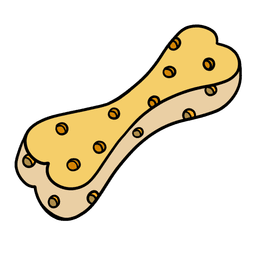Sections
Latest
German noun cases can be very confusing. This guide helps you master German nouns from the get-go.





German noun cases can be a tricky concept for English speakers to grasp, but once you understand the basic rules, you'll be well on your way to mastering German.

If you have never heard about the case system, the sentence above might seem daunting to you. But don't worry - we'll explain everything now.
Before we get started, it's important to understand the general concept of noun cases. In German, nouns can take on different "shapes". A German noun will change it's shape, depending on the role it plays in the sentence.
These shapes are commonly known as cases and there are four noun cases in German are:
Now, you might ask why the German language has noun cases in the first place? What's the purpose of noun cases in German?
The simple answer is that, in German, the shape of the noun can tell you a what's going on in the sentence and how the nouns relate to each other.
For example: when a noun is in the accusative case, you know that it's role in the sentence is that of an object: No matter where in the sentence it appears, it will always be the object:
This is unlike in English, where word order matters a lot more. But we will look at that in a bit.
The nominative case is used for the subject of a sentence, and is also
the default form of a noun. For example, in the sentence Der Hund bellt, the noun Hund
is the subject. That's why in German it will have to be in the nominative case.
You can think of the nominative case as the base form of a word - that's the form of the word, that you will learn when studying flashcards or remembering the words article (der/die/das).
The accusative case is best understood in contrast to the nominative. It is used for the direct object of a sentence. So whenever the subject does something & there is an object or person that receives this action, this will be the object of the sentence.
Let's have a look at an example:
Here, the noun "Hund" is in the accusative case (der Hund becomes den Hund),
because it is the direct object of the sentence. The man is the subject of the sentence, while the
dog is the object of the man's action. The man sees the dog.
Now consider this: We could swap things around an say that the dog sees the man. In this case,
the dog will become the subject (and be in the nominative case: der Hund), while Mann
will be our direct object (and in the accusative case: den Mann):
What's even more interesting is that, in German, we don't have to swap the two nouns around to change the meaning of the sentence.
We could just leave them in their positions and let the cases alone tell us who sees whom:
Since we know that den Hund is an accusative, we know that it's the object of the sentence - no matter at what
position in the sentence it appears.
This is not possible in English: "The boy sees the man" & "The man sees the boy" have different meanings, based on where in the sentence the words show up.
Now, just as the accusative is best understood in contrast to the nominative case, the dative case is best understood in contrast to the accusative case.
While the accusative case is used for the direct object of a sentence, the dative case is used for the indirect object of a sentence. For example, consider this sentence:
Here, Hund is in the dative case (dem Hund), because it is the indirect object.
The man gives the bone.
The genitive case is used to indicate possession. For example, in the sentence "Das ist der Hut des Mannes," the noun "Mannes" is in the genitive case because it indicates that the hat belongs to the man.
It's worth noting that the articles, adjective and pronoun also change according to the case of the noun, which makes it more complex. However, with practice and exposure to the language, you will be able to identify the cases automatically.
In conclusion, understanding German noun cases is an important step towards mastering the German language. With a little bit of practice and exposure to the language, you'll be able to use noun cases correctly in no time!